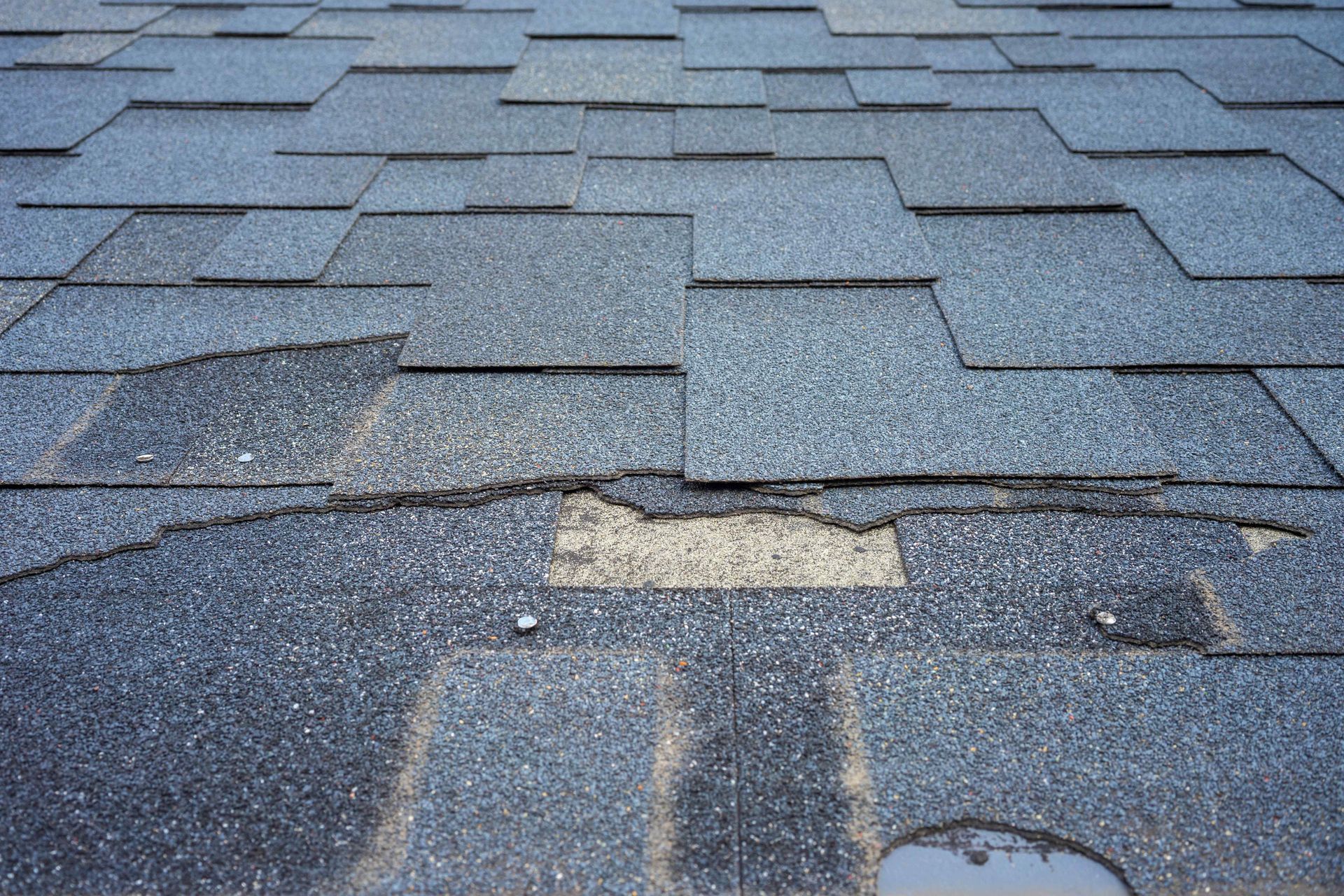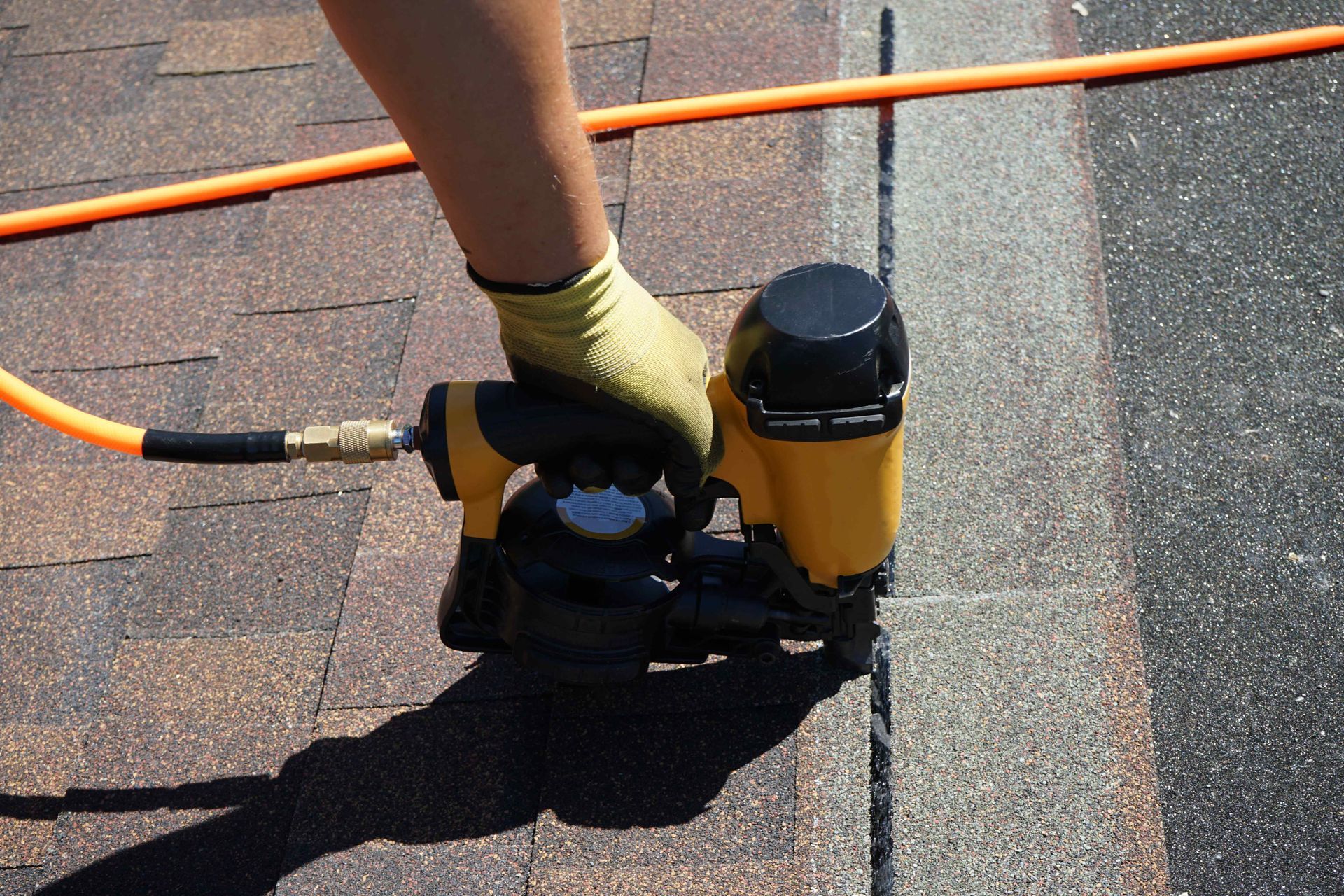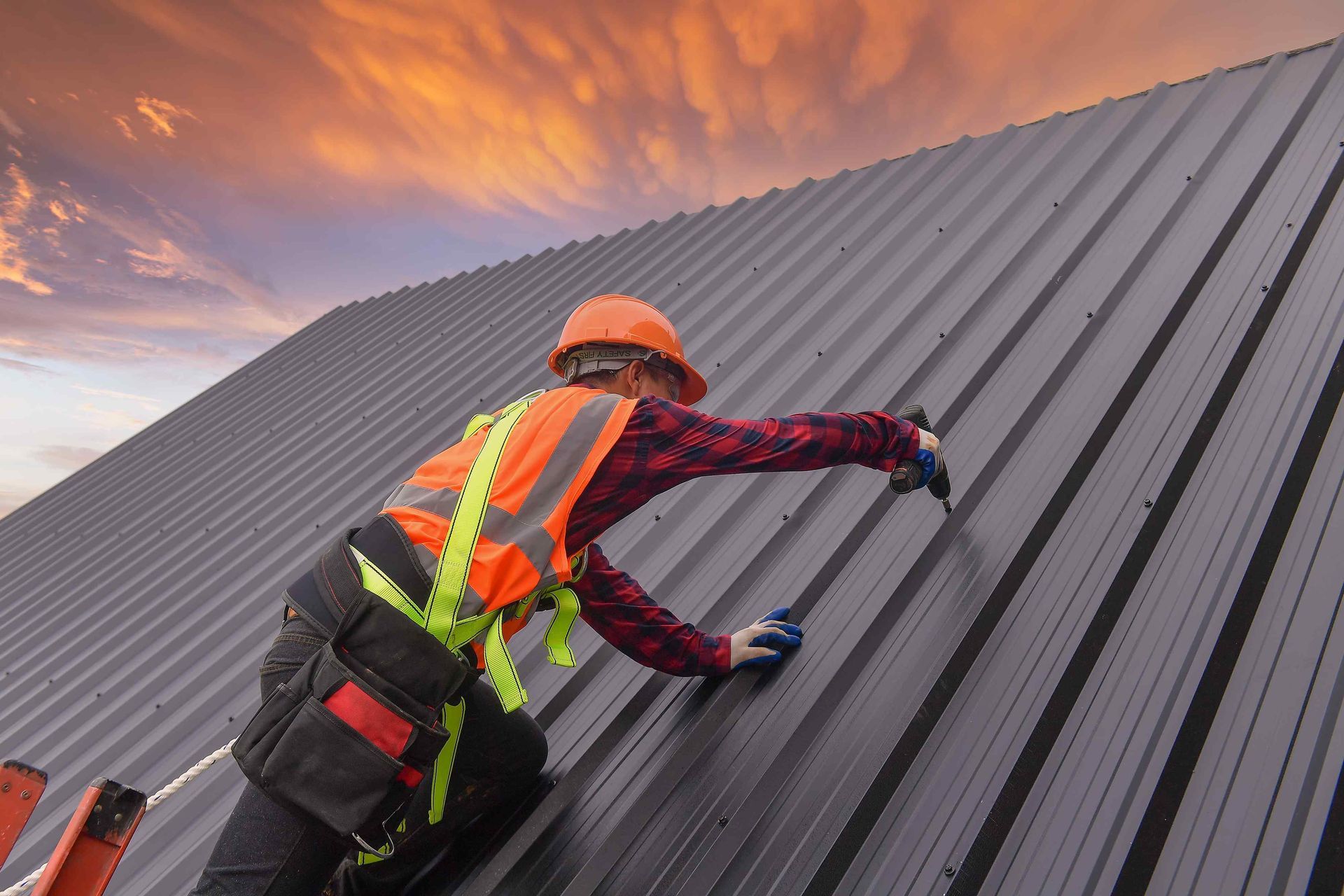How Much Should a Roof Repair Cost
How Much Should a Roof Repair Cost?
Understanding the factors that influence roof repair costs is crucial for homeowners facing potential repairs. In this comprehensive guide, we delve into various aspects that impact the overall cost of roof repair, providing you with valuable insights to navigate this important decision-making process. From the size and material of your roof to labor costs, local market trends, and additional considerations like permits, inspections, warranties, and maintenance, we cover it all. By the end of this blog post, you will have a clearer understanding of the cost dynamics involved in roof repair, empowering you to make informed decisions and find cost-effective solutions that align with your budget and needs.
Factors Affecting Roof Repair Costs
When determining the cost of a roof repair, several key factors come into play. Understanding these factors can help you get a clearer picture of why repair costs vary. Here, we will delve into the main considerations that influence the overall expense of roof repairs:Roof Size:The size of your roof is a crucial factor in determining repair costs. Larger roofs require more materials and labor, which can drive up the overall expense. Roofers typically calculate costs per square foot, so the larger the area that needs repair, the higher the cost.Extent of Damage:The severity of the damage to your roof directly impacts the repair costs. Minor repairs such as fixing a few shingles will be less expensive compared to major repairs like structural damage or widespread leaks. The extent of the damage will dictate the materials needed and the labor involved.Roofing Materials:The type of roofing materials used for your repair will also play a significant role in cost. Different materials come with varying price points, and some require specialized skills for installation. Whether you have asphalt shingles, metal roofing, or other materials, the cost of materials and labor will vary accordingly.
Roof Size
When it comes to calculating the cost of a roof repair, one of the key factors to consider is the size of the roof. Roof size plays a significant role in determining the overall expenses involved in the repair process. Larger roofs generally require more materials and labor, which can drive up the cost of the repair. Understanding how roof size influences pricing can help you better estimate the total expenses and budget accordingly.Roof size is typically measured in squares, with one square equaling 100 square feet of roofing material. The size of your roof directly impacts the amount of material needed for the repair. The larger the roof, the more materials will be required to complete the job. This includes roofing shingles, underlayment, flashing, and other necessary supplies.In addition to materials, labor costs are also influenced by the size of the roof. Larger roofs may require more labor hours to complete the repair, especially if the damage is extensive or if intricate repairs are needed. Roofing professionals often consider the complexity of the job, the pitch of the roof, and the accessibility of the work area when estimating labor costs.When assessing the size of your roof for repair costs, it's essential to take accurate measurements. This includes calculating the total square footage of the roof surface and identifying any additional features, such as dormers or skylights, that may affect the repair process. By providing precise measurements to your roofing contractor, you can ensure a more accurate estimate of the repair costs based on the size of your roof.
Extent of Damage
The extent of damage to a roof is a significant factor in determining repair costs. Minor issues such as missing shingles or small leaks may require simple repairs, resulting in lower costs. However, if the damage is extensive, such as widespread leaks, structural issues, or significant storm damage, the repair expenses can escalate significantly. It is essential to conduct a thorough inspection to assess the full extent of the damage before estimating repair costs accurately. Addressing minor damage promptly can help prevent more extensive issues down the line, potentially saving you money in the long run. Understanding the extent of damage to your roof is key to planning and budgeting for necessary repairs effectively.
Roofing Materials
When it comes to determining the cost of your roof repair, the choice of roofing materials plays a significant role. The type of materials selected can greatly impact the overall expenses associated with the repair work. Different roofing materials vary in terms of cost, durability, and aesthetic appeal. Here, we explore common roofing materials used in repairs:1. **Asphalt Shingles**: Asphalt shingles are popular due to their affordability and ease of installation. They come in various colors and styles, offering versatility to homeowners. However, they may have a shorter lifespan compared to other materials.2. **Metal Roofing**: Metal roofs are known for their durability and long lifespan. While the initial cost may be higher, they require minimal maintenance and offer superior protection against harsh weather conditions.3. **Wood Shake Shingles**: Wood shake shingles provide a natural, rustic look to a home. They are eco-friendly and offer good insulation properties. However, they may require more maintenance compared to other materials.4. **Tile Roofing**: Tile roofs are aesthetically pleasing and offer excellent durability. They come in various materials such as clay, concrete, or slate, each with its unique characteristics and price points.5. **Slate Roofing**: Slate roofs are renowned for their beauty and longevity. They are a high-end roofing option that can last for decades with proper care. However, slate is among the most expensive roofing materials available.When considering roofing materials for your repair project, it's essential to weigh factors such as cost, longevity, maintenance requirements, and the overall aesthetic appeal to make an informed decision that aligns with your budget and preferences.
Labor Costs
When it comes to roof repair costs, labor expenses play a significant role in the overall pricing. Labor costs are influenced by various factors such as the complexity of the repair work needed, the expertise of the roofing professionals involved, and the overall time required to complete the job.Roof repair projects that involve intricate repairs, such as fixing structural damage or addressing complex leaks, often require more labor hours, leading to higher costs. Additionally, the skills and experience of the roofing contractors can impact labor charges. Experienced roofers who specialize in specific repair tasks may command higher hourly rates compared to general roofing workers.The efficiency and productivity of the labor team are also essential factors to consider. A well-organized crew that works promptly and effectively can complete the repair work in a shorter time frame, potentially reducing labor costs. Conversely, delays in the project timeline due to inefficiencies or lack of coordination among the labor force can prolong the repair process, resulting in increased labor expenses.Moreover, location can influence labor costs, as rates may vary based on the regional demand for roofing services, cost of living, and prevailing wage standards. Understanding the labor cost landscape in your area and obtaining multiple quotes from reputable roofing companies can help you assess the reasonableness of the labor charges for your roof repair project.By delving into labor costs and considering the various factors that impact pricing, you can gain a better understanding of this crucial component of roof repair expenses. Making informed decisions regarding labor expenses can contribute to the overall cost-effectiveness of your roof repair project and ensure that you receive quality workmanship within your budget consUnderstanding local market trends is essential when estimating roof repair costs. Factors such as demand for roofing services, availability of materials, and labor costs can significantly impact the overall expense of your project.In regions where the demand for roofing services is high, you may find that prices are more competitive due to the availability of multiple contractors vying for business. Conversely, in areas with limited roofing professionals, prices may be higher due to increased demand and a scarcity of providers.Additionally, the availability and cost of roofing materials in your local market can influence repair costs. If certain materials are in high demand or need to be sourced from afar, it can drive up the overall expense of your repair project.Labor costs are another key consideration affected by local market trends. Areas with a high cost of living or where there is a shortage of skilled labor in the roofing industry may see higher labor expenses. Conversely, in regions with abundant roofing professionals, labor costs may be more competitive.By staying informed about your local market trends, you can better budget for your roof repair project and understand the factors that contribute to the final cost.
Additional Costs and Considerations
When planning for a roof repair, it's essential to consider additional costs and various factors that may impact the overall repair expenses. Beyond the initial estimation of the repair work based on factors like roof size, extent of damage, roofing materials, and labor costs, there are extra considerations that can contribute to the total cost. Permits and inspections are essential requirements in many areas before commencing roof repairs. These costs should be factored into your budget. Additionally, warranties and maintenance agreements might influence the overall repair costs. Understanding these additional costs and considerations will help you prepare a more accurate budget for your roof repair project and avoid unexpected expenses along the way. By being aware of these factors upfront, you can make informed decisions and ensure a smoother repair process.
Permits and Inspections
Permits and inspections are crucial aspects of the roof repair process that can impact the overall cost. Before starting any repair work, homeowners should check if permits are required by their local municipality. Permit costs vary depending on location and the scope of the repair project, so it's essential to factor this into the budget.Inspections are often necessary to evaluate the condition of the roof and determine the extent of damage that needs to be addressed. Professional roof inspectors can identify underlying issues that may not be visible to the untrained eye, ensuring that repairs are comprehensive and effective. While inspection fees add to the initial cost, they can help prevent future problems and potentially save money in the long run by addressing issues early. By obtaining the necessary permits and investing in thorough inspections, homeowners can ensure that their roof repair meets building codes and industry standards, ultimately leading to a successful and cost-effective repair process.
Warranty and Maintenance
When it comes to the cost of roof repair, considering warranty and maintenance aspects is crucial. Warranty details can have a significant impact on the overall repair costs, as they may cover certain repairs or materials for a specified period. Some warranties offer protection against manufacturing defects or installation issues, potentially reducing out-of-pocket expenses for repairs within the warranty terms.It's important to review the warranty associated with your roofing materials and installation to understand what repairs may be covered. Certain manufacturers provide warranties on roofing materials that can range from a few years to several decades, offering varying levels of protection against defects or premature wear. If the damage to your roof is covered under the warranty, you may only need to pay for labor costs, if applicable, while the materials are supplied at no additional expense based on the terms of the warranty.Maintenance also plays a key role in managing roof repair costs. Regular inspections and upkeep can help identify issues early on, preventing minor problems from escalating into major repair projects. Simple maintenance tasks such as clearing debris from the roof, checking for leaks, and ensuring proper ventilation can prolong the lifespan of your roof and reduce the frequency of repairs needed. By investing in routine maintenance, you can potentially avoid costly repairs caused by neglect or poor upkeep.Including warranty information and maintenance practices in your overall approach to roof repair can help you make informed decisions and potentially save money in the long run. Understanding the coverage provided by your warranty and staying proactive with roof maintenance can contribute to minimizing unexpected repair expenses and ensuring the longevity of your roof.
Cost-Effective Solutions
In the realm of roof repair costs, seeking cost-effective solutions can be a strategic approach to ensuring quality repairs without breaking the bank. Here are some practical and budget-friendly strategies to consider when embarking on your roof repair journey:1. **Regular Maintenance**: Investing in routine maintenance can help identify and address small issues before they escalate into major repair projects. Simple tasks like clearing debris, checking for leaks, and inspecting the roof's condition can prevent costly damages down the line.2. **Timely Repairs**: Addressing minor repairs promptly can prevent them from developing into extensive problems that require significant financial investments. Don't overlook small leaks or loose shingles, as they can lead to more substantial issues if left unattended.3. **Choose Cost-Effective Materials**: When selecting materials for your repair, opt for budget-friendly yet durable options that suit your needs. Consider materials that offer a good balance between affordability and quality to maximize your investment.4. **Work with Reliable Contractors**: Partnering with reputable and experienced roofing contractors can ensure that the repair work is done correctly the first time. Quality workmanship can prevent the need for frequent repairs, saving you money in the long run.5. **Explore Financing Options**: If the cost of repairs exceeds your budget, look into financing options available through contractors or third-party providers. Many companies offer flexible payment plans that can help spread out the cost of repairs over time.6. **Energy-Efficient Upgrades**: Incorporating energy-efficient upgrades during the repair process, such as improving insulation or installing reflective roofing materials, can lower your energy bills over time and potentially offset repair costs.By incorporating these cost-effective solutions into your roof repair plan, you can effectively manage expenses while ensuring a durable and long-lasting solution for your roofing needs.
Conclusion: Finding the Right Balance in Roof Repair Costs
In the quest to determine how much a roof repair should cost, finding the right balance is key. By considering the various factors that influence roof repair costs, such as roof size, extent of damage, roofing materials, labor expenses, local market trends, permits, inspections, warranties, and maintenance, you can gain a comprehensive understanding of the pricing dynamics involved.Striking the right balance in roof repair costs involves weighing the quality of workmanship against the budgetary constraints. Opting for cost-effective solutions that address the repair needs efficiently without compromising on the durability and performance of the roofing system can be a prudent approach.Additionally, staying informed about local market trends and labor costs can help you negotiate fair pricing with roofing contractors and identify opportunities for potential cost savings. Understanding the additional costs and considerations, including permits, inspections, warranties, and maintenance requirements, allows you to plan effectively and avoid unexpected expenses down the line.In conclusion, by integrating the insights gained from analyzing the various factors affecting roof repair costs and leveraging cost-effective solutions tailored to your specific repair needs, you can navigate the process of determining the right balance in roof repair expenses. Ultimately, making informed decisions and prioritizing quality and affordability will contribute to a successful roof repair project that aligns with your financial goals and ensures the longevity of your roofing investment.

Aux Element 1

Aux Element 2

Aux Element 3
Quick & Reliable roof repair and installation Savannah Georgia
Ready to secure your property with top-tier roofing? Contact us today for reliable solutions that stand the test of time—your trusted Savannah roofing partner – Top Roof.
Navigation
Working hours
- Mon - Fri
- -
- Saturday
- -
- Sunday
- Closed

All Rights Reserved | Top Roof
Powered by: WebPro.ai

